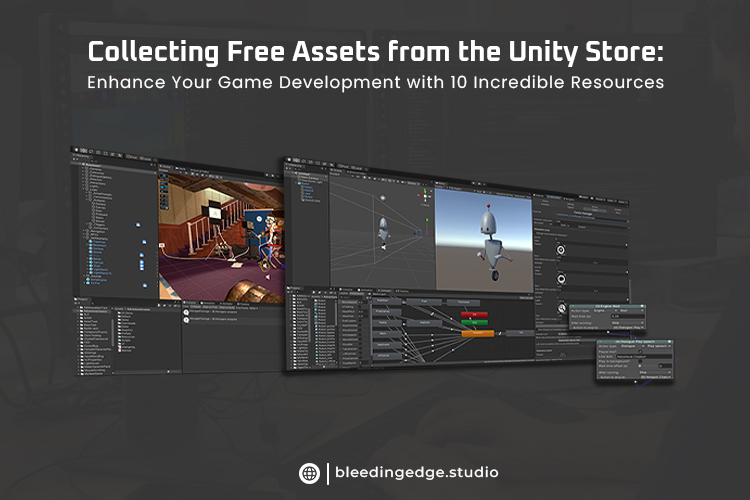Collecting Free Assets from the Unity Store: Enhance Your Game Development with Incredible Resources
Introduction:
Game development is an exciting and creative process that can be time-consuming and resource-intensive. Fortunately, the Unity Store provides a vast library of assets, tools, and plugins to accelerate your game development journey. While many of these resources come at a price, a treasure trove of high-quality free assets is also available. In this blog, we will explore the process of collecting free assets from the Unity Store and how they can enhance your game development projects.
1. Navigating the Unity Store:
The Unity Store is a thriving marketplace for game developers, offering a wide range of assets such as 3D models, textures, audio clips, animations, scripts, and more. You can visit the Unity website or launch the Asset Store window within the Unity Editor to access the store. Once there, you can search for assets based on specific criteria, such as category, platform compatibility, and pricing.
2. Exploring the Free Asset Collection:
Unity provides an extensive selection of free assets that can significantly enrich your game development process. These assets are typically created by the Unity team or talented community members who generously contribute their work to support the community. To discover free assets, you can browse the store’s collection or filter search results to display only free items.
3. Selecting the Right Assets:
With thousands of free assets available, choosing the ones that align with your project’s needs and style is crucial. When evaluating assets, consider factors such as quality, compatibility with your target platform, and licensing terms. Read asset descriptions, check user reviews and ratings, and preview screenshots or demos to better understand the asset’s capabilities and potential fit for your game.
4. Understanding Asset Licensing:
Asset licensing is an essential aspect of using resources from the Unity Store. While free assets are available for use without any upfront cost, they may have specific usage restrictions or requirements outlined in their licenses. It’s crucial to review the licensing terms provided by the asset creators to ensure compliance with any usage conditions, such as providing attribution or limitations on commercial use.
5. Importing Assets into Your Project:
Once you have identified the free assets you wish to use, importing them into your Unity project is straightforward. In the Unity Editor, navigate to the Asset Store window and click the “Download” button for the desired assets. Unity will automatically download and import the assets into your project, organizing them within the appropriate folders for easy access.
6. Leveraging Free Assets in Game Development:
Free assets can be a game-changer for your project, saving you valuable time and effort in creating assets from scratch. Whether you need 3D models for characters and environments, sound effects, or pre-built scripts for gameplay mechanics, free assets can provide a solid foundation for your game development. You can customize and modify these assets to suit your vision, helping you iterate quickly and focus on the core aspects of your game.
7. Contributing to the Community:
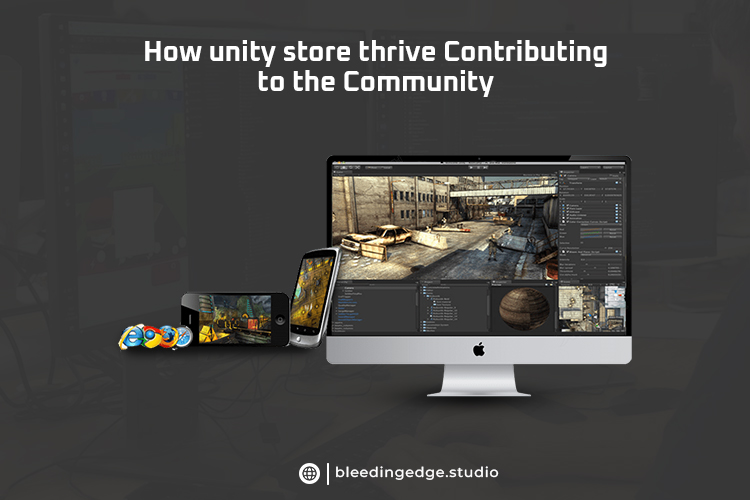
The Unity Store thrives on the contributions of talented individuals who create and share their assets with the community. As you progress in your game development journey, consider giving back by sharing your creations as free assets. By contributing your work, you can support fellow developers and contribute to the growth of the Unity ecosystem from free assets from the Unity Store.
- Regularly Check for Updates: The Unity Store frequently adds new free assets to its collection. Make it a habit to check for updates and new releases regularly. This ensures you stay up-to-date with the latest resources and can use fresh content that may align perfectly with your project.
- Asset Compatibility and Optimization: Consider their compatibility with your target platform and Unity version while collecting free assets. Verify that the assets are optimized and perform well within your game. Properly optimized assets can help maintain smooth gameplay and improve overall performance in free assets from the Unity Store.
- Create a Personalized Asset Library: As you collect free assets from the Unity Store, consider creating a personal asset library within your project. Organize the assets into folders and subfolders based on categories such as characters, environments, audio, and scripts. This organization system will help you quickly locate and utilize the assets in future projects or during different stages of development.
- Combine and Customize Assets: Free assets often provide a great starting point, but feel free to combine and customize them to make them unique to your game. With some creativity and tweaking, you can create something that stands out and fits your project’s style and requirements perfectly.
- Give Credit and Show Appreciation: When using free assets that require attribution, ensure that you give proper credit to the asset creators within your game’s credits or documentation. It’s a small gesture that acknowledges their work and supports the spirit of collaboration within the game development community. Additionally, consider leaving positive feedback or reviews for the particularly useful or exceptional assets, as this encourages and motivates asset creators to continue their contributions of free assets from the Unity Store.
- Participate in Asset Challenges and Contests: The Unity Store occasionally hosts asset challenges and contests where developers can showcase their creativity using specific free assets. Participating in these events provides an opportunity to showcase your skills and allows you to learn from and collaborate with other developers in the community of free assets from the Unity Store.
- Explore Beyond the Store: While the Unity Store is an excellent resource, focus on its offerings. Some other platforms and websites provide free or open-source assets, such as OpenGameArt, Kenney.nl, and Sketchfab. Expanding your search beyond the Unity Store can broaden your options and provide you with a wider variety of assets.
- Asset Compatibility and Integration: Before integrating assets into your project, ensure they are compatible with the Unity version you are using. Consider how well they integrate with your existing assets and project structure. Ensuring seamless integration will save you time and effort during the development process of free assets from the Unity Store.
- Asset Documentation and Support: Many free assets on the Unity Store come with documentation or instructions provided by the creators. Take the time to read through the documentation, as it can provide valuable insights on utilizing the assets best. Furthermore, check for any support available for the assets, such as forums or contact information for the creators, in case you encounter any technical issues.
- Collaborate and Remix: Free assets can serve as building blocks for collaboration and remixing. Consider teaming up with other developers to combine and modify assets, creating something unique. Collaboration expands your creative possibilities and fosters a sense of community and shared learning for free assets from the Unity Store.
- Regularly Explore New Categories: Don’t limit yourself to familiar categories while searching for free assets. Explore new areas that may be relevant to your project. For example, if you are working on a 2D platformer, you might find useful assets in the UI or visual effects categories you have already considered. Broadening your search can lead to exciting discoveries and fresh ideas.
- Asset Optimization and Performance: Assess the performance impact of the assets you intend to use. While free assets are valuable, some may be more resource-intensive than others. Optimize and fine-tune the assets to ensure they don’t negatively impact the overall performance of your game. This may involve reducing polygon counts, optimizing textures, or implementing efficient coding practices in free assets from the Unity Store.
- Provide Feedback and Suggestions: If you come across free assets that could benefit from improvements or have suggestions for the creators, provide constructive feedback. Engaging with asset creators and sharing your insights can contribute to the refinement and evolution of those assets, benefiting the community.
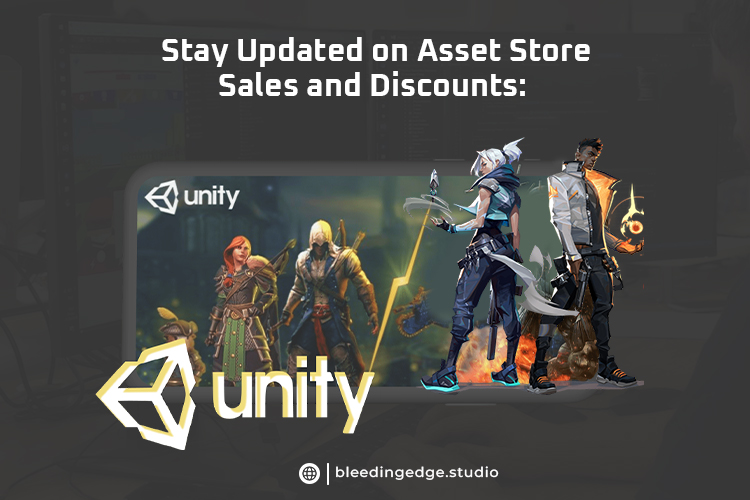
- Stay Updated on Asset Store Sales and Discounts: While this blog focuses on free assets, it’s worth mentioning that the Unity Store occasionally offers sales and discounts on paid assets. Keeping an eye out for these promotions can allow you to access high-quality assets at significantly reduced prices, expanding your resource library further in free assets from the Unity Store.
- Use Asset Packs: Besides individual assets, the Unity Store offers free asset packs containing related resources. These packs can include entire scenes, character sets, or themed assets that can be a great starting point for your game. Exploring asset packs can save you time and effort by providing a cohesive set of resources that work well together.
- Read User Reviews and Ratings: Take advantage of the user review and rating system available on the Unity Store. The feedback provided by other developers can help you assess the quality and usability of the free assets you’re considering. Review reviews that mention asset performance, documentation, and overall user experience to make informed decisions about free assets from the Unity Store.
- Experiment with Different Styles: Free assets can expose you to various art styles, allowing you to experiment and explore different visual aesthetics for your game. By trying out assets with diverse art styles, you can discover new inspirations and find a style that resonates with your vision in free assets from the Unity Store.
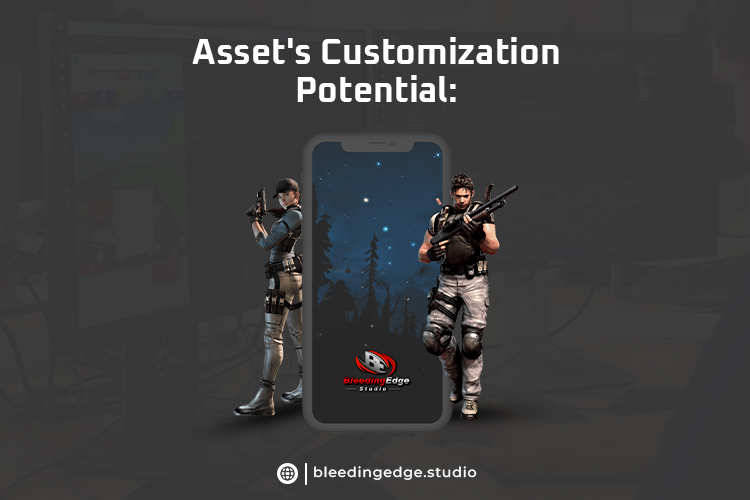
- Consider the Asset’s Customization Potential: Some free assets provide a high degree of customization, allowing you to modify their appearance or behavior to fit your needs. Look for assets that offer customization options through parameter adjustments or exposed variables. This flexibility empowers you to tailor the assets to match your desired gameplay mechanics or visual style in free assets from the Unity Store.
- Check Asset Compatibility with Other Tools and Plugins: If you use external tools or plugins in your Unity project, ensure that the free assets you choose are compatible. For example, if you rely on a specific animation or physics plugin, verify that the assets can seamlessly integrate and work together without conflicts.
- Contribute to Asset Improvement: If you have the skills and expertise, consider improving free assets. You can fix bugs, optimize performance, or add new features to existing assets, then share your modified versions with the community. This collaborative effort helps enhance the quality and usability of free assets, benefiting all developers who utilize them after free assets from the Unity Store.
- Subscribe to Asset Store Newsletters: Stay updated with the latest developments in the Unity Store by subscribing to newsletters or following the Unity Store’s social media channels. These platforms often announce new releases, updates, and promotions, ensuring you get all the valuable free assets and limited-time offers in free assets from the Unity Store.
- Give Back to the Community: Once you have successfully utilized free assets from the Unity Store in your projects, consider sharing your experiences and knowledge with other developers. Engage in forums, tutorials, or online communities to help newcomers or those seeking guidance. By sharing your insights and expertise, you contribute to the growth and support of the Unity community of free assets from the Unity Store.
- Keep Learning and Evolving: Lastly, continue using free assets as they are. Continuously expand your skill set and knowledge by learning new techniques and tools. As a developer grows, you can create your assets or modify existing ones, further enhancing your ability to bring your unique game ideas to life.
Types of Free Assets you can find on the Unity Asset Store:
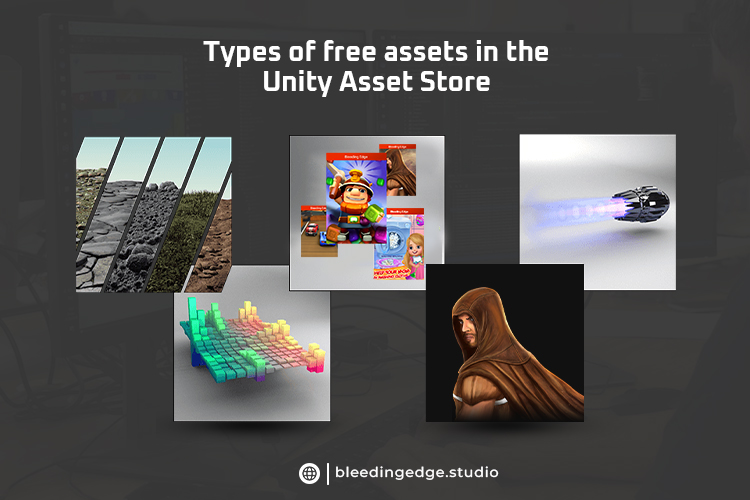
Here are some important types of free assets you can find on the Unity Asset Store:
- 3D Models: Free 3D models are widely available on the Unity Store, including objects, characters, environments, and props. These assets can significantly enhance the visual quality of your game without the need for extensive modeling work.
- Textures and Materials: Texture packs and material libraries provide a wide variety of free options for enhancing the visual appeal of your game. These assets include textures for different surfaces, such as wood, metal, concrete, and fabric, as well as pre-built materials that can be applied to your 3D models.
- Audio Assets: Free audio assets include sound effects, background music, ambient sounds, and voice-over samples. These assets help create an immersive audio experience in your game, adding depth and realism to your gameplay.
- Particle Effects: Particle effect libraries offer a range of free assets for creating stunning visual effects, such as explosions, fire, smoke, sparks, and magical elements. These assets can bring your game to life and add dynamic visuals to gameplay scenarios.
- UI/Graphics: Free UI assets provide ready-to-use elements for creating user interfaces, menus, icons, and buttons. These assets can save you time designing and implementing your game’s user interface, ensuring a polished and professional look in free assets from the Unity Store.
- Scripts and Plugins: Free scripts and plugins can enhance the functionality of your game by providing pre-built systems or features. These assets cover various aspects, such as character controllers, camera systems, AI behaviors, inventory management, and more.
- Animations: Free animation assets include character animations, such as idle, walk, run, and combat movements. These assets can add fluidity and realism to your game characters without requiring extensive animation work.
Shaders and Visual Effects: Shader packs and visual effect assets offer a range of free options for enhancing the visual quality of your game. These assets provide advanced rendering techniques, post-processing effects, and shader presets that can dramatically improve the overall aesthetics of your game. - Tools and Utilities: Free tools and utilities help streamline your game development process by providing handy features and functionalities. These assets can include level editors, code libraries, debugging tools, asset management systems, and more after free assets from the Unity Store.
- Tutorials and Documentation: While not assets in the traditional sense, free tutorials and documentation available on the Unity Store can be invaluable resources. They provide step-by-step instructions, guides, and examples for various game development topics, helping you learn and master different aspects of free assets from the Unity Store.
Remember to explore the Unity Asset Store regularly, as new free assets are added frequently. With these free assets, you can accelerate your game development process, save time, and create impressive experiences for your players.
Conclusion:
The Unity Store’s collection of free assets is a valuable resource for game developers, offering a wide range of high-quality resources that can enhance your projects. By navigating the store, exploring the free asset collection, and selecting the right assets, you can leverage the power of these resources to streamline your game development process. Remember to review the licensing terms, import assets into your project, and customize them to suit your specific needs and creative vision. By utilizing free assets, you can focus your time and energy on other crucial aspects of game development, such as gameplay mechanics, level design, and storytelling of free assets from the Unity Store.
However, it’s important to remember that while these assets are free, they still require proper attribution and adherence to their respective licenses. Make sure to carefully read and understand the licensing terms for each asset you use to avoid any legal issues down the line.
Once you have imported the assets into your project, you can incorporate them into your game. This might involve integrating 3D models into your scenes, applying textures and materials, adding audio clips to create immersive soundscapes, or implementing scripts to enhance gameplay mechanics. The possibilities are endless, and the free assets from the Unity Store provide you with diverse options.
Additionally, free assets can serve as great learning tools. By examining how certain assets are created and implemented, you can gain insights into industry best practices and improve your game development skills. Feel free to experiment and modify the assets to suit your specific needs and artistic style.
Furthermore, the Unity community is incredibly supportive and encourages collaboration. If you encounter any issues or have questions regarding the free assets you’ve downloaded, you can seek assistance from forums, online communities, or even the asset creators themselves. Engaging with the community not only helps you overcome challenges but also allows you to contribute to the collective knowledge and growth of aspiring game developers.
Lastly, while free assets are undoubtedly valuable, it’s important to strike a balance and not rely solely on them. Developing your assets or investing in premium resources can help differentiate your game and give it a unique identity. However, free assets can be a fantastic starting point, especially for indie developers or those on a tight budget.
In conclusion, collecting free assets from the Unity Store opens up opportunities for game developers. By exploring the vast library of assets, selecting the right ones, understanding licensing terms, and leveraging them effectively, you can enhance your game development process while saving time and resources. Embrace the power of free assets, unleash your creativity, and embark on an exciting journey to create captivating and immersive gaming experiences.
Collecting free assets from the Unity Store empowers game developers to create stunning, engaging experiences without a hefty financial investment. By ensuring compatibility, leveraging documentation, collaborating with others, exploring new categories, optimizing assets, and staying engaged with the community, you can maximize the potential of these free resources. The Unity Store is a treasure trove of creativity waiting to be discovered, so dive in, explore, and let your imagination soar as you enhance your game development projects with incredible free assets.
Collecting free assets from the Unity Store is a fantastic way to enhance your game development projects without breaking the bank. You can build a diverse and unique library of resources by exploring the store’s offerings, checking for updates, customizing assets, and giving credit to creators. Remember to balance using free assets and developing your own to create a game that reflects your vision and creativity. Happy asset hunting and game development!
Collecting free assets from the Unity Store provides game developers with a wealth of resources to enhance their projects. By considering asset packs, reading user reviews, experimenting with styles, checking compatibility with other tools, contributing to the improvement, and giving back to the community, you can maximize the value of these free assets. Embrace free assets opportunities, unleash your creativity, and embark on an exciting game development journey.
